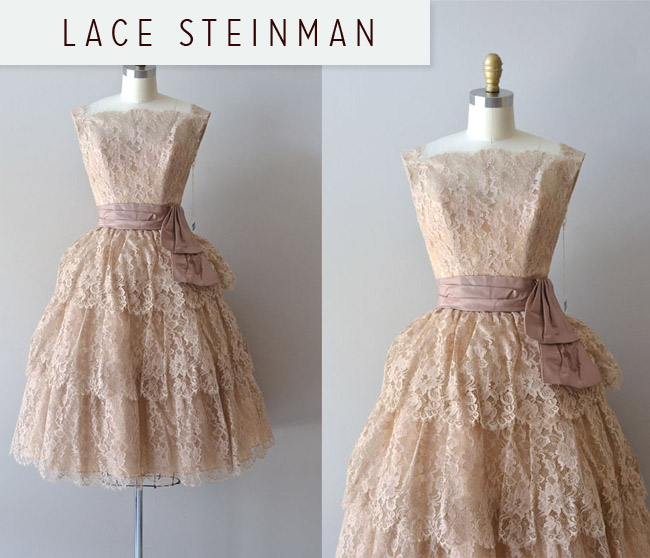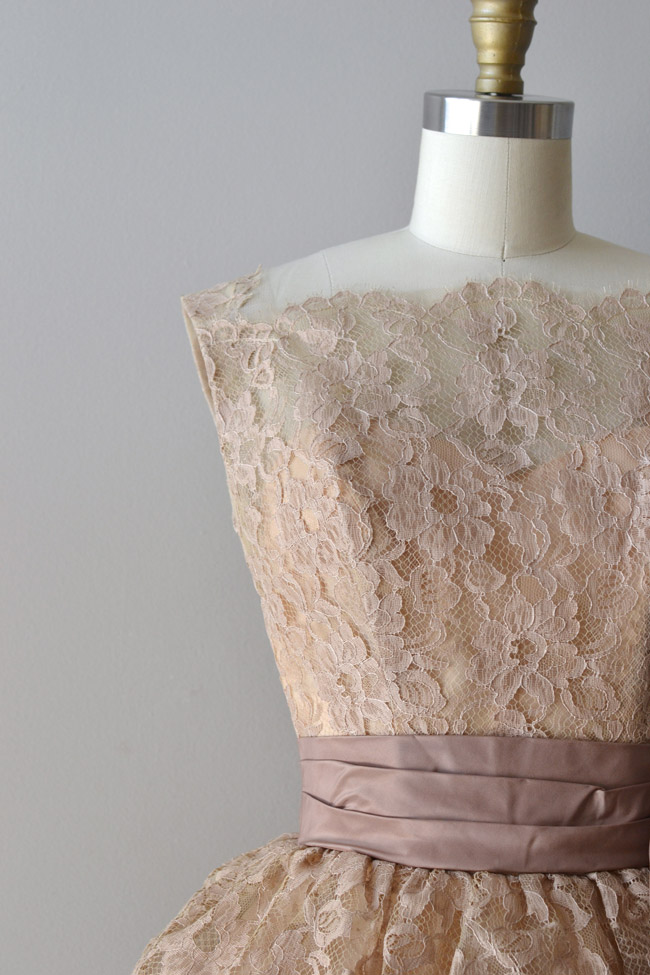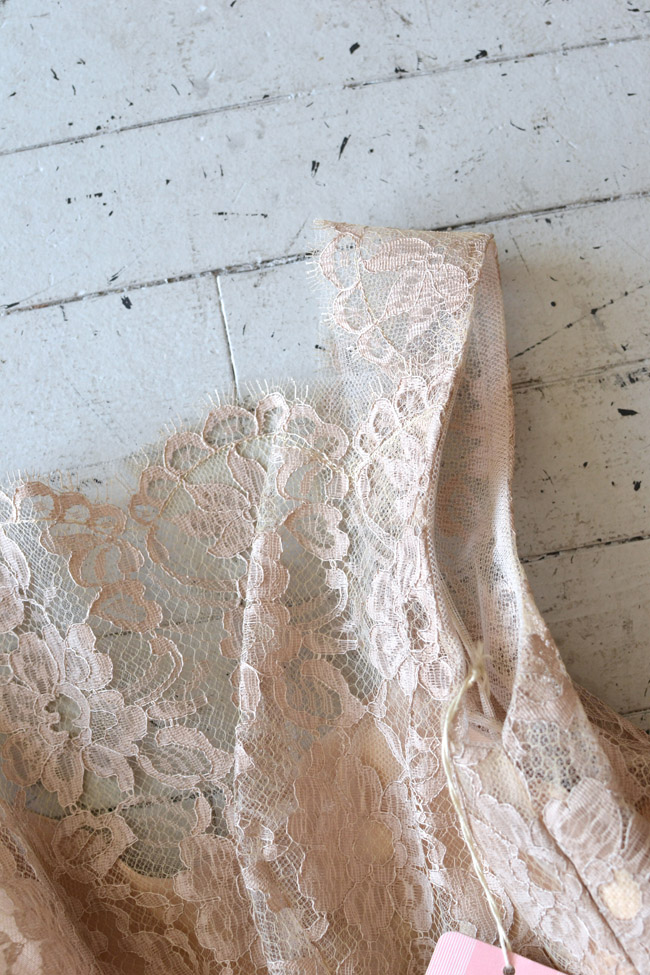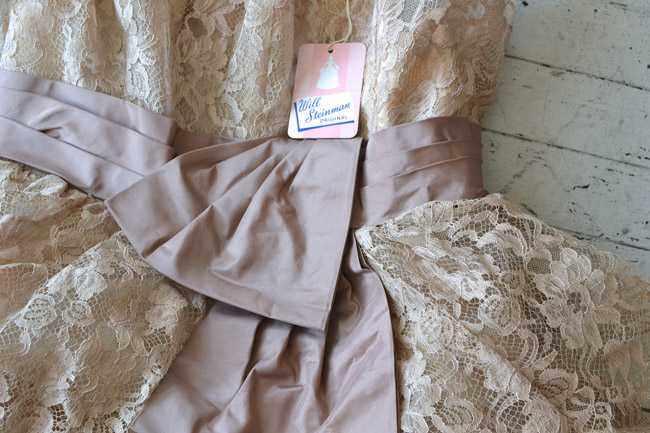Behind the Seams: Construction Details from DearGolden

The Will Steinman Original formal dress company produced prom, formal, debutant and wedding dresses from the 1920’s through the 1960s.
And lucky for us, Lauren from DearGolden got her hands on one of their party dresses from the ’50s! I love the demure, dusty pink and purple colors of this dress. Let’s look closer at some of the details!

All of the lace is backed by nylon netting. At the armholes, the edge of the lace appears to be finished with net binding (like you would do with bias binding). At the scallops (along the neckline and on each skirt layer) the tulle was topstitched to the lace by machine, following the curve of the scallops.


And look at that lovely, pleated silk sash at the waistline.



 Sign In
Sign In

Comments
Annette Tirette
September 25, 2013 #
That is beautiful! I love seeing details like these, and this is becoming an amazing series of posts!
cheryl
September 25, 2013 #
Beautiful
Joyce
September 25, 2013 #
I love this dress, it is simply timeless.
Regina Roza
September 25, 2013 #
Absolutely stunning!! There are no other words for something this lovely and it takes me back to when I first started sewing in the early seventies when all those techniques were still in practice and it’s sad that they’re not used today! I mean look at the finished garment!! Just lovely…
Chantilly
September 25, 2013 #
So beautiful! Thanks for showing the inside construction too!
wundermary
September 25, 2013 #
All of these techniques were still in use when I learned to sew, too. And it does sound scratchy, doesn’t it? You would get a little of that. But, no woman would have donned this dress without a proper slip underneath. Not just to protect from the scratching; also her reputation. Not wearing a proper slip would have been considered trashy.
Pırpır
September 25, 2013 #
This looks beyond lovely! I’ve always wondered how they made the lace stand still, now I now! :)
Lakshmi R P
September 25, 2013 #
Omg! I have exactly similar fabric in same shade…wow! I got inspiration as to what to make out of it
Claire
September 27, 2013 #
These posts are the best! The mesh bias binding at the armholes answers a conundrum I had while sewing my sister’s wedding dress. Thanks for all the lovely detailed info and pictures!
Melanie
September 29, 2013 #
Love these posts. I’m intrigued by the mesh – do you mean tulle, net or something different altogether? I had thought tulle and net had no grain, so what gives away that the sleeves are backed with bias? Just wondering….
Rachel
October 8, 2013 #
Tulle is a netting, usually made of nylon. You are correct that it doesn’t have a grain exactly, and I didn’t see how the seamstress cut the tulle. But it does appear to have been cut in strips and sewn onto the armholes in a similar to fashion to how one would use bias binding to finish an armhole. (I removed the word mesh, as that appears to be netting made of other fibers, and this dress is made with two different sizes of net nylon.)